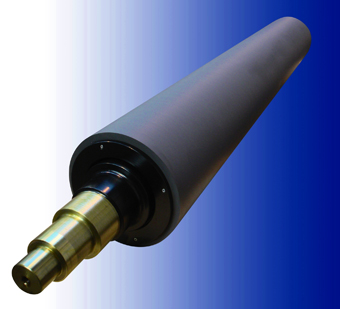The third ITMA Asia + CITME at the Shanghai New International Expo Centre (SNIEC) closed its doors
on June 16, 2012. By posting time for this issue of the Rupp Report, official numbers of visitors
and country breakdown were not yet available. As mentioned in the Rupp Report of last week, there
were several important announcements in Shanghai about cooperations and acquisitions.
One of the highlights was the statement that Toyota Industries Corp., Japan, and Trützschler
GmbH & Co. KG, Germany, have agreed to cooperate on developing, manufacturing and marketing
combing machines. The other remarkable news is the acquisition of A. Monforts Textilmaschinen GmbH
& Co. KG, Germany, by Hong Kong-based Fong’s Industries Co. Ltd., a daughter company of China
Hi-Tech Group Corp. (CHTC). These changes are definitely not the last ones in the coming months and
years. Here is a first glimpse of opinions and statements taken from many executive interviews with
exhibitors on the last two days of ITMA Asia + CITME.
Expectations Fulfilled
The range of answers to the question “Are you happy so far with this ITMA Asia + CITME, and
were your expectations fulfilled?” went from “quite satisfied” up to “yes, we are very happy with
the outcome of this show.” Of course, most of the visitors came from Mainland China — some
exhibitors estimated more than 80 percent — but it was interesting to hear about the origination of
other visitors. Virtually all companies answered that second place was taken by visitors from
India, followed by Bangladesh, Pakistan and Indonesia, but also from Japan and Vietnam. Everybody
agreed that not many Turkish visitors were present. This is no surprise after the recent exhibition
ITM took place in Istanbul just a few weeks ago.
Difficult To Handle
Some exhibitors complained that it’s getting more and more difficult to organize this show.
One exhibitor said that there were too many contact persons: “For every different question, we have
to contact different organizations and people. This complicates the handling of the event
drastically. And the biggest problem is the language.”
But the biggest problem was the air conditioning of the halls. Everybody — exhibitors and
visitors—- criticized the fact that in the afternoon, the heat and humidity in the halls increased
dramatically. “I’m sure they turned off the air conditioning at 3 p.m. to save power,” said one
exhibitor. An old problem is the layout of the halls. Nobody could find particular aisles, because
there were no letters on the ceilings to facilitate the finding of a specific exhibitor.
Another problem, also mentioned in previous Rupp Reports, is the infringement of intellectual
property. “The list of copies,” said many exhibitors, “is endless.” The Rupp Report witnessed one
example of how the problem was handled. In the booth of a well-known European supplier, one could
see the original machine. Just opposite, an almost perfect copy was shown. After protesting about
this situation by the European exhibitor, the copy was banned and covered by the organizers.
However, soon afterward, the Chinese exhibitor took away the cover.
Changing Markets
One remarkable thing was the fact that the Chinese market is changing from a pure export
market to a more domestic market. Buyers are more aware about quality products because the level of
products for the domestic market is steadily increasing.
One of the big issues is sustainability and more environmentally friendly processing. Energy
and water savings as well as labor costs are the topics for the years to come in the Chinese
textile industry. One Chinese official mentioned to the Rupp Report that in the last five years,
Chinese labor costs have increased 20 percent every year.
Europe Is Still Important, But …
However, for all interviewed companies, China is by far the most important market, followed
by India, Turkey, Brazil, Pakistan and Bangladesh, all on the same level of significance as volume
markets. However, for the majority of the European manufacturers, Europe is still a very important
market, because so far, technical textiles are mainly produced in Europe. “And,” said one
exhibitor, “these people need the best and most sophisticated machinery to manufacture their
products. And these requirements are a constant motivation for us all to invent even better
machinery for the future markets and to fight against copies.”
Another issue is the volatile currencies. One factor is the weak euro. However, for European
suppliers, the low exchange rate for the currency is an advantage in the export industry. On the
other hand, the Chinese industry is showing some slowdown — on a very high level, compared with
other nations. That’s why the Chinese National Bank reduced the interest rates. “But,” said most of
the exhibitors, “this is not stimulating the business with China at all.”
… Europe Is The Problem
The answer to the question about any problem distorting the business was answered with one
voice: The big problem is Europe. As long as the Europeans cannot solve their internal financial
problems with some countries on the threshold of bankruptcy, the uncertainty will remain, which is
not favorable for future global business and investments.
The Power Of Strength
The development of ITMA Asia + CITME towards becoming a domestic event was hardly to be
overlooked. The fact is that more than 65 percent of all exhibitors were of Chinese origin, and by
walking through the halls, one had the impression of being at ShanghaiTex. And, for the first time
in the existence of any ITMA, one company occupied one full hall alone: CHTC. In spite of the ITMA
rules that every section of the industry must be grouped in separate halls, CHTC assembled all its
companies in Hall W1, without any problem. When asked about this situation at the press conference,
a Chinese official answered that they allowed CHTC to do so “as an exception.” In the official
press release prior to the event, it was mentioned that “the five-day show is owned by CEMATEX [the
European Committee of Textile Machinery Manufacturers], together with its Chinese partners — the
Sub-Council of Textile Industry, CCPIT (CCPIT-Tex), China Textile Machinery Association (CTMA) and
China International Exhibition Centre Group Corporation (CIEC).” This might be written on paper,
but the reality shows a different picture: Many European exhibitors expressed their annoyance with
the idea of the future ITMA Asia as an international event. It seems that CEMATEX, the owner of the
ITMA brand, has completely lost the lead over this event. One had the idea that the presence of
CEMATEX President Stephen Combes was more in the role of a background actor than in a leading role.
Back To Internationality (?)
In 2001, ITMA Asia was established to underline the growing importance of the Asian markets
and to reduce the number of exhibitions in the Far East, namely OTEMAS, CITME and ShanghaiTex. The
idea was to run an ITMA every four years each in Europe and in Asia, alternating every two years
between locations. The times have changed — now there is an ITMA Asia + CITME every two years, and
ShanghaiTex still exists. Many Europeans complain about this fact, but ask not to disclose their
names. Most of them argued that ITMA Asia is not an international exhibition any more, but just
another Chinese show, and CEMATEX should organize the event in other countries too — maybe go back
to Singapore, or to Hong Kong.
It was somewhat strange to hear the answer from one European exhibitor to the question: “What
do you expect from 2013?” He said, “That is a year without an ITMA.” But how can the problem be
solved, the Rupp Report asked many exhibitors? One speculation would be to combine the interest in
the Chinese market in general with the domestically produced machinery products from the European
suppliers by organizing a ShanghaiTex every year. On the other hand, there would be an ITMA Asia
every four years with selected exhibitors only. When the Rupp Report discussed this with some
exhibitors they answered: “Please write about it.”
More specific information about ITMA Asia + CITME will follow in the next weeks. Dear reader,
if you want to contribute to this discussion, positively or negatively, write to
jrupp@textileworld.com. As usual, the source of
information will not be published if you do not wish to be named.
And, as was mentioned in a sideline at the opening press conference, the next ITMA Asia +
CITME will be held in June 2014, of course, in Shanghai.
June 26, 2012





